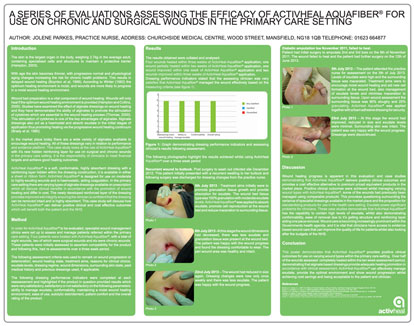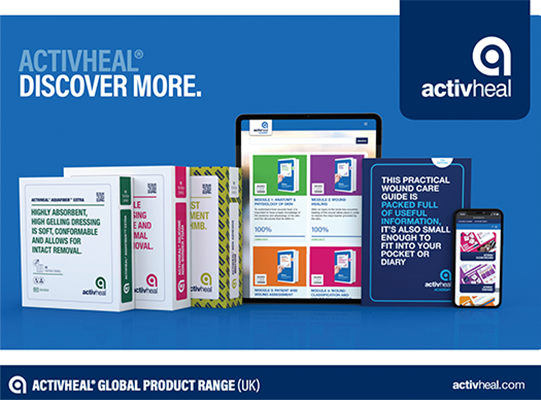Clinical Resource
A Series of Evaluations Assessing The Efficacy of ACTIVHEAL AQUAFIBER® For Use on Chronic And Surgical Wounds in The Primary Care Setting
Jolene Parkes, Practice Nurse
Churchside Medical Centre, Wood Street, Mansfield
Clinical Resource
A Series of Evaluations Assessing The Efficacy of ACTIVHEAL AQUAFIBER® For Use on Chronic And Surgical Wounds in The Primary Care Setting
Jolene Parkes, Practice Nurse
Churchside Medical Centre, Wood Street, Mansfield
BACKGROUND
With age the skin becomes thinner, with progressive normal and physiological aging changes increasing the risk for chronic health problems. This results in delayed wound healing (Boynton et al, 1999). According to Winter (1962) the optimum healing environment is moist, and wounds are more likely to progress in a moist wound healing environment.
Wound bed preparation is a vital component of wound healing. Wounds will only heal if the optimum wound healing environment is provided (Hampton and Collins, 2005). Studies have examined the effect of alginate dressings on wound healing and they have demonstrated the ability of alginates to promote the stimulation of cytokines which are essential to the wound healing process (Thomas, 2000). This stimulation of cytokines is one of the key advantages of alginates. Alginate dressings also act as a haemostat and absorb exudate in the initial stages of application thus promoting healing via the progressive wound healing continuum (Brady et al, 1980).
In the market place today there are a wide variety of alginates available to encourage wound healing. All of these dressings vary in relation to performance and evidence platform. This case study looks at the use of ActivHeal Aquafiber® with it’s new hidden reinforcing layer for use on surgical and chronic wounds in the primary care setting. It is the responsibility of clinicians to meet financial targets and achieve good healing outcomes.
ActivHeal Aquafiber® is a soft, conformable, highly absorbent dressing with a reinforcing layer hidden within the dressing construction, it is available in either a sheet or ribbon form. ActivHeal Aquafiber® is designed for use on moderate to highly exuding wounds and is haemostatic, aiding coagulation. In the primary care setting there are varying types of alginate dressings available on prescription which all discuss clinical benefits in accordance with the promotion of wound healing and differ in cost. The newly developed reinforced layer of the dressing provides improved wet integrity ensuring the clinician is confident that the dressing can be removed intact and is highly absorbent. This case study will discuss how ActivHeal Aquafiber® can deliver positive clinical and cost effective outcomes which will benefit both the patient and the NHS.

METHOD
In order for ActivHeal Aquafiber® to be evaluated, specialist wound management clinics were set up to assess and manage patients referred within the primary care setting. Four patients were treated with ActivHeal Aquafiber®, with a total of eight wounds, two of which were surgical wounds and six were chronic wounds. These patients were initially assessed to ascertain compatibility for the product and following this, had reassessments over a three week period.
The following assessment criteria was used to remark on wound progression or deterioration; wound healing state, treatment aims, reasons for clinical choice, exudate levels, dressing regime, wound dimensions, surrounding skin state, past medical history and previous dressings used, if applicable.
The following dressing performance indicators were completed at each reassessment and highlighted if the product in question provided results which were very satisfactory, satisfactory or not satisfactory on the following parameters: ability to manage exudate, conformability, maintaining a moist wound healing environment, ease of use, autolytic debridement, patient comfort and the overall rating of the product.
RESULTS
Four wounds healed within three weeks of ActivHeal Aquafiber® application, one wound partially healed within two weeks of ActivHeal Aquafiber® application, one wound improved within one week of ActivHeal Aquafiber® application and two wounds improved within three weeks of ActivHeal Aquafiber® application. Dressing performance indicators stated that the assessing clinician was very satisfied that ActivHeal Aquafiber® managed the wound effectively based on the measuring criteria (see figure 1).
Figure 1: Graph demonstrating dressing performance indicators and assessing clinician’s results following assessment.
The following photographs highlight the results achieved whilst using ActivHeal Aquafiber® over a three week period
RECURRENT WOUND TO BUTTOCK
Post surgery to wash out infected site December 2012. This patient initially presented with a recurrent swelling to her buttock and following surgery was discharged for dressing changes from the practice nurse.
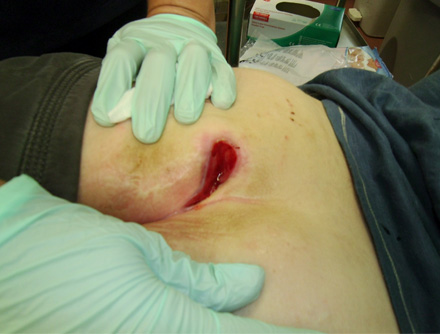
5th July 2013

8th July 2013
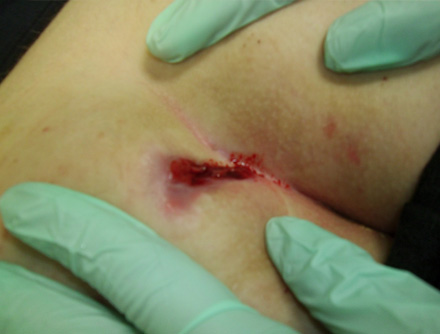
22nd July 2013
DIABETIC AMPUTATION TOE NOVEMBER 2011, FAILED TO HEAL
Patient had initial surgery to amputate 2nd and 3rd toes on the 9th of November 2011. The wound failed to heal and the patient had further surgery on the 12th of June 2013.

5th July 2012
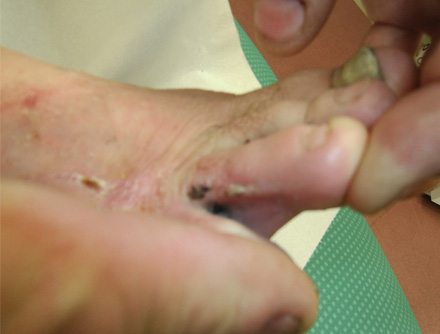
23rd July 2013
DISCUSSION
CONCLUSION
References
Barrett, S. E. Varely, S. J. (1997) The Effects of Calcium Alginate on Wound Healing. Anal Royal College of Surgeons England. 69 (4): 153–155.
Brady, S. C. Snelling, C. F. Chow, G. (1980) Comparison of Donar site Dressings. Ann Plast Surg. 5 (3): 238 – 243
Boynton, P. R. Jaworski, D. Paustian et al. (1999) Infection control properties of some wound dressings. Journal of Wound Care. 8: 10, 499-502
Hampton, S. Collins, F. (2003) Tissue Viability. London, United Kingdom: Whurr Publications
Thomas, S. (2000) Alginate dressings in surgery and wound management part 1. Journal of wound care. 9 (2) 56-60
Winter, G. (1962) Formation of the scab and the rate of epithelialisation of superficial wounds in the skin of the young domestic pig. Nature. 193, 293-294
CONTACT US FOR MORE INFORMATION
Discover ActivHeal®
Social Media
Our Product Range
AMS Group
ActivHeal®, its logo and the Advanced Medical Solutions logos are registered trademarks of Advanced Medical Solutions Ltd.
Copyright © Advanced Medical Solutions Limited | Design by Lumisi Ltd
